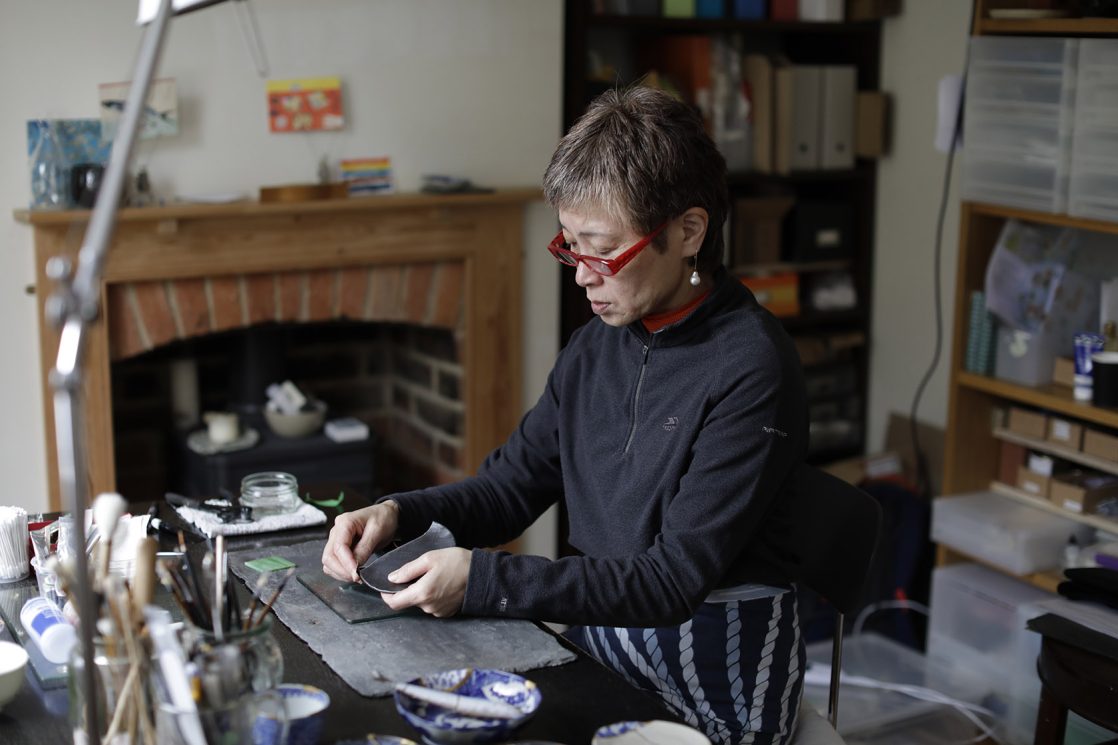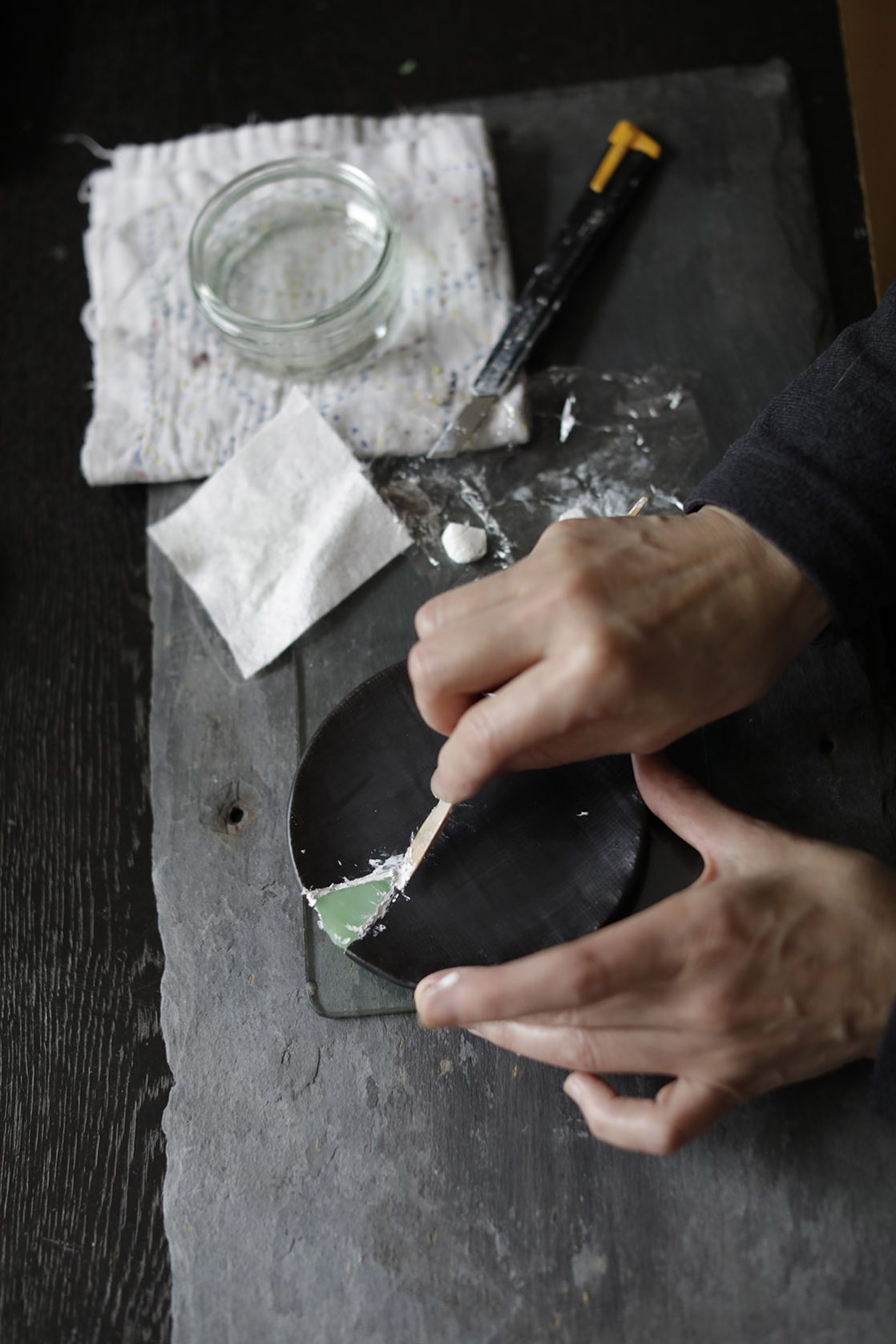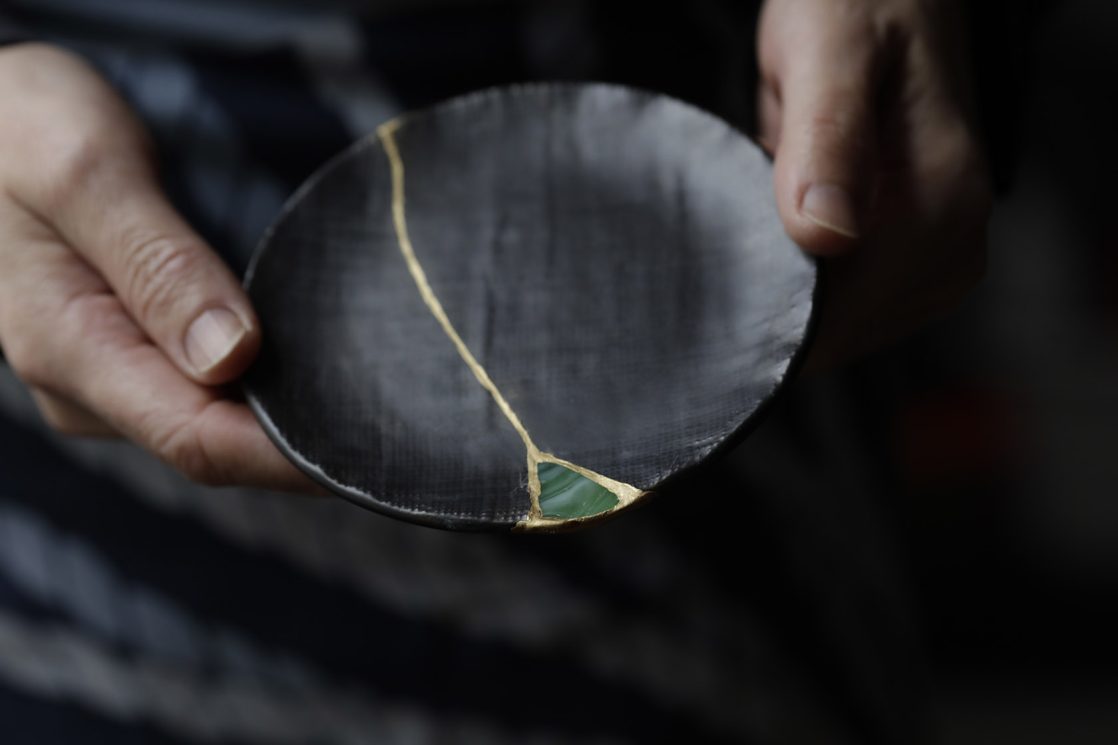Welcome to Ceramic Review
Ceramic Review is the magazine for contemporary and historical ceramics, ceramic art and pottery.
Ceramic Review Issue 334
July/August 2025
Ceramic Review is the magazine for contemporary and historical ceramics, ceramic art and pottery.
July/August 2025
The Japanese kintsugi repairer shares the process she uses for repairing broken ceramics using yobitsugi, incorporating the techniques of easy kintsugi (kan-i kintusgi)
I haven’t always been an artist or craftsperson, I started out as a Japanese language teacher and have 20 years’ experience in this field. That was until 2014, when my husband and I were asked by an urushi organisation from Japan to promote works that use urushi lacquer. The organisation suggested using kintsugi as a medium to introduce these pieces.
The craft of kintsugi is held in high regard in Japan due to its complexity and extensive history. Many successful urushi craftspeople have either previously studied the craft at university or have been training for an extensive amount of time at designated schools.


While working as an assistant to two young craftsmen from Kyoto in museums and events in the UK, I saw that they were using modern materials, epoxy glue and epoxy putty, which shortened the repair processes from one month to one day. I was astounded. We Japanese call this method easy kintsugi (kan-i kintsugi). Being familiar with the various adhesives and the uses of brushes, this method immediately attracted me.
Soon after meeting these two craftsmen, I remembered my small ceramic sardine decoration, commonly found in souvenir shops by the seaside in Europe and sold for about five euros. A piece of memorabilia that had been broken for many years, kept in a box and hidden away. I thought: ‘I can fix the sardine!’ and that was my start to kintsugi.
Since then, I have carried out research and emailed many questions to those urushi craftsmen and learned how to repair by myself. There were no accessible books in stores or YouTube videos to help when I started. I have learned from trial and error.
At first, when I told the craftsmen that I wanted to learn kintsugi, they said it was too late as it takes 10 years to learn about the materials alone, so I thought it would just be a hobby. However, as it costs a lot to import fresh materials from Japan just for my personal use, I started selling excess materials online to reduce my expenses. Naturally, people started asking me to teach them easy kintsugi with those materials. The demand later increased as the Covid-19 lockdowns began. So, I started providing workshops along with selling online.
Now, after nearly 10 years since I first encountered kintsugi, I use traditional materials and methods, but most of my repairs use epoxy when allowed. I teach easy kintsugi at my workshops in Oxford, but after items are repaired with epoxy, I use a traditional finish with urushi and metal powders to avoid further shortcuts and to keep an authentic appearance.
The ‘easy’ method requires less materials and reduces the time spent on individual items, which in turn reduces the cost of repairs. That means more happy plates and owners, and many happy kintsugi repairers.
For more details and to purchase materials visit kintusgioxford.com; @kintsugioxford
All photography by Layton Thompson
